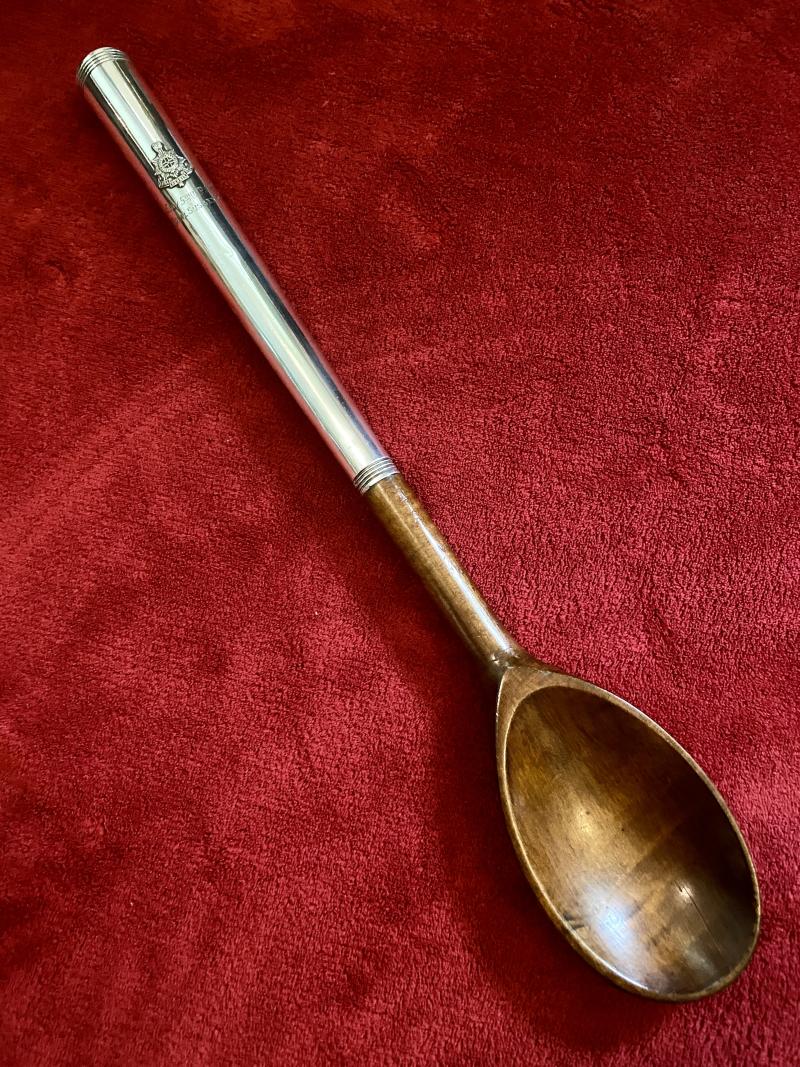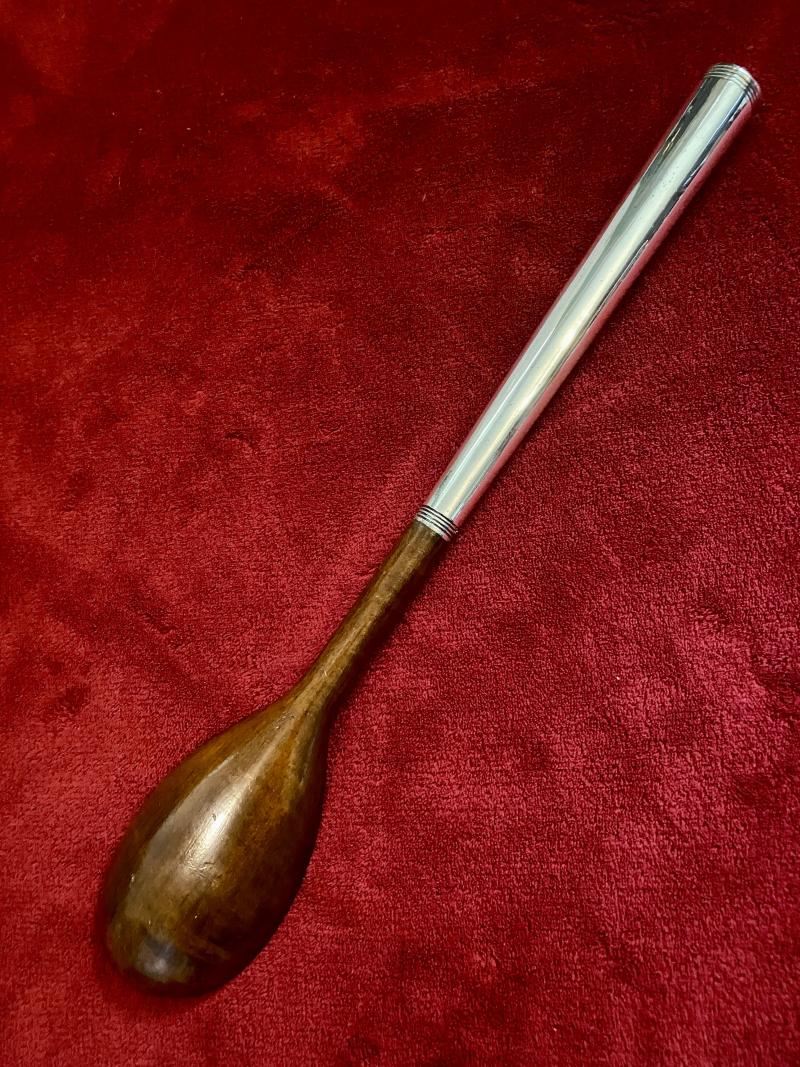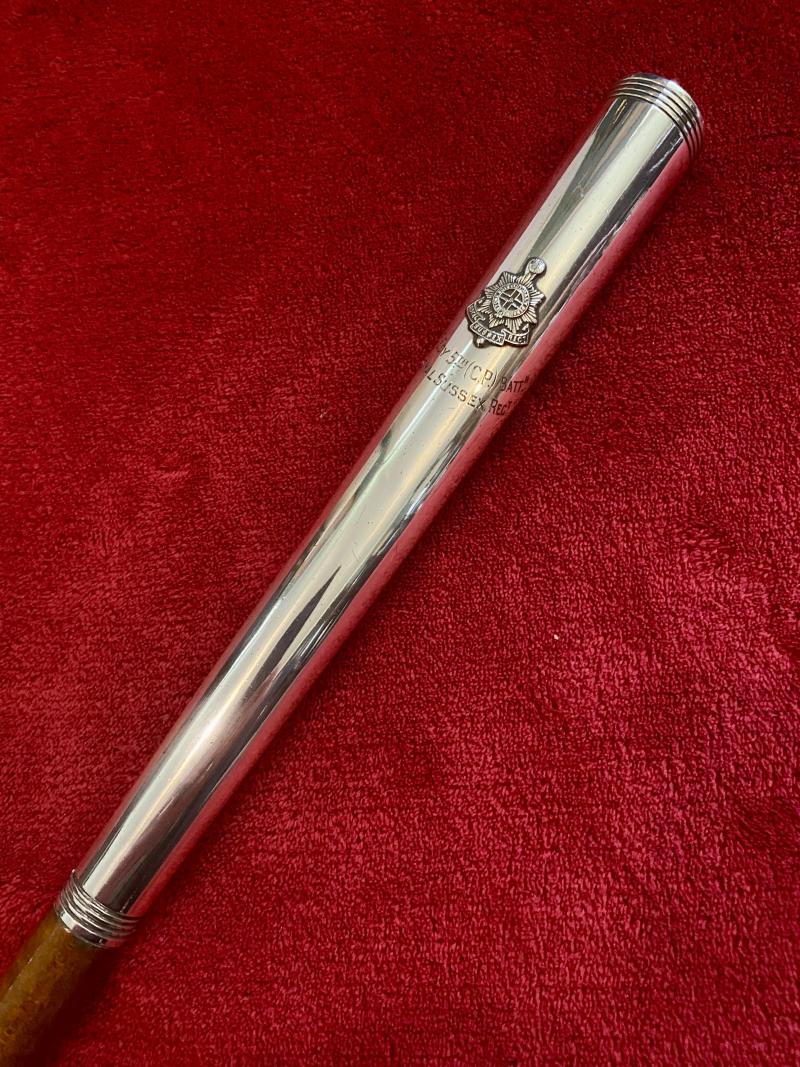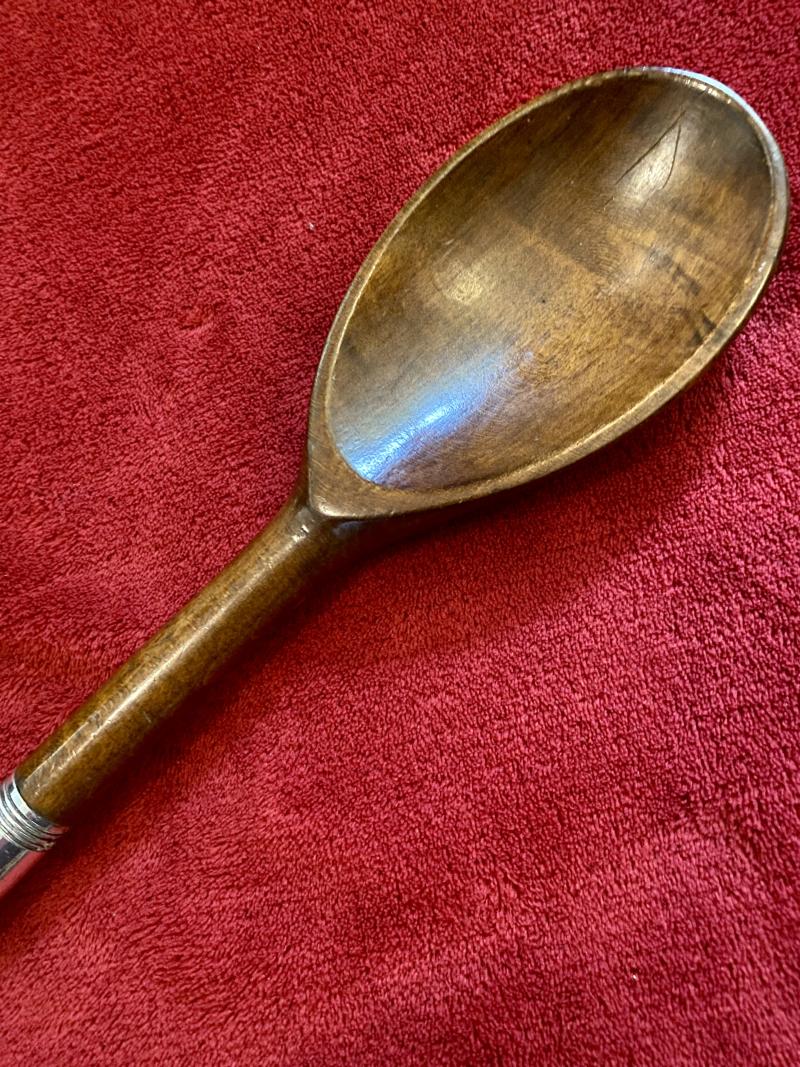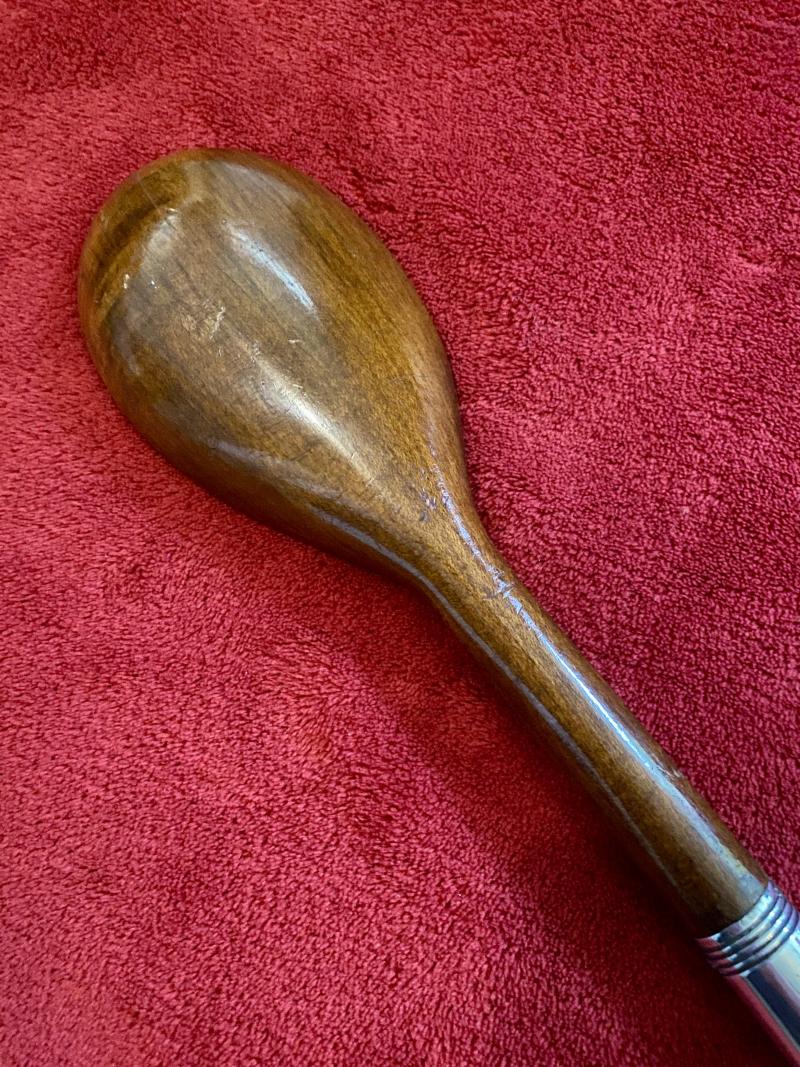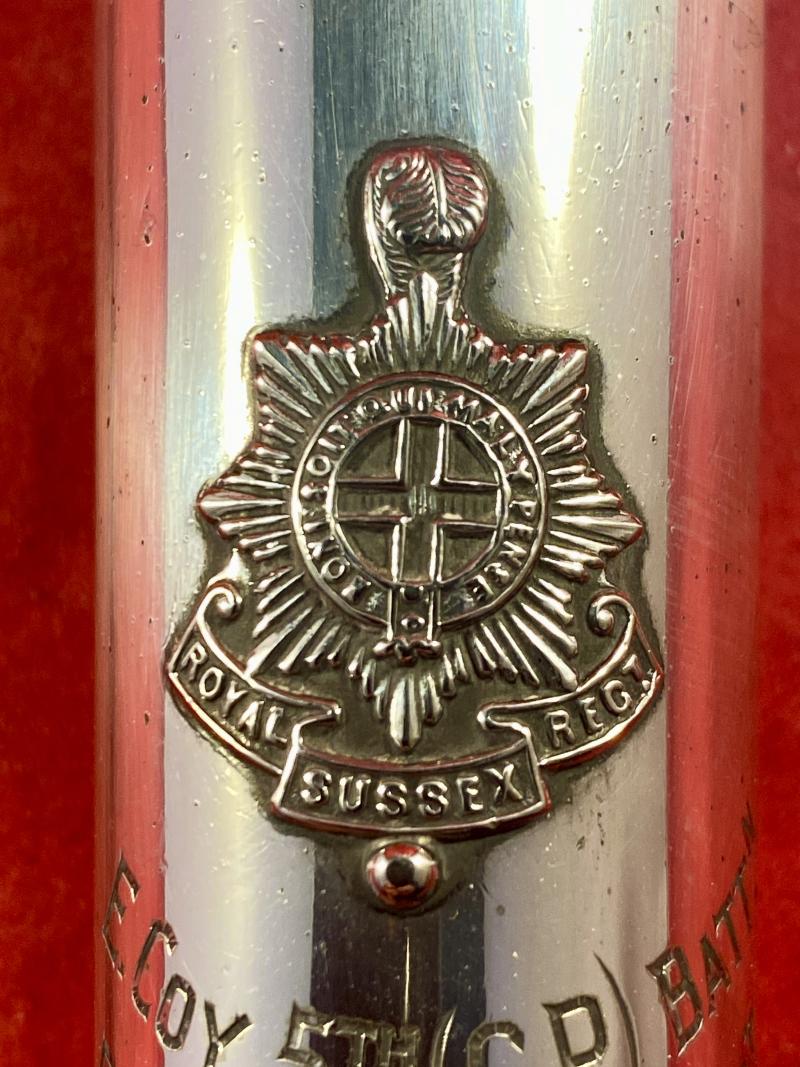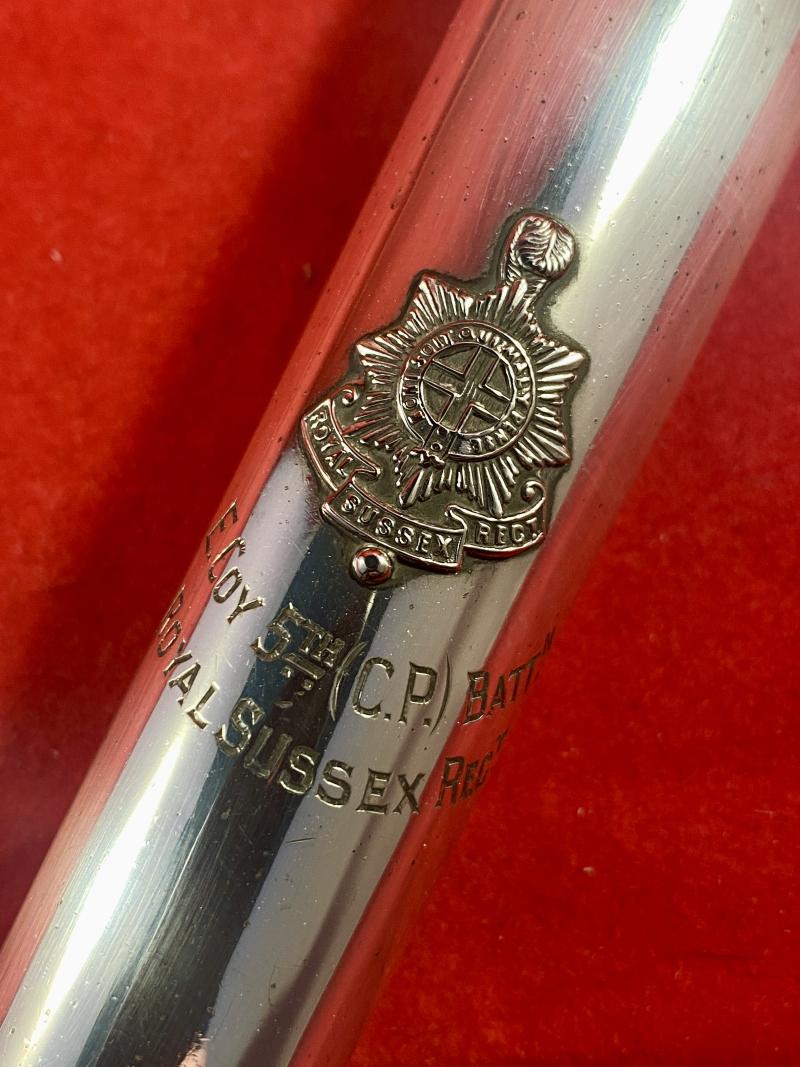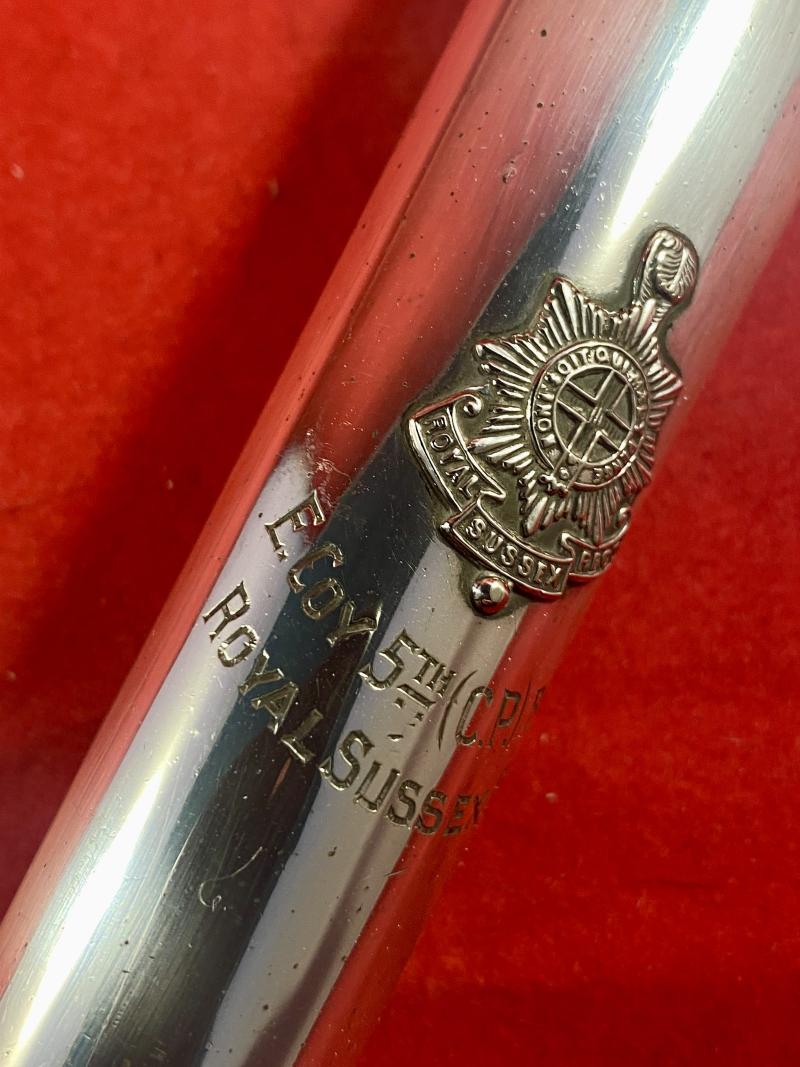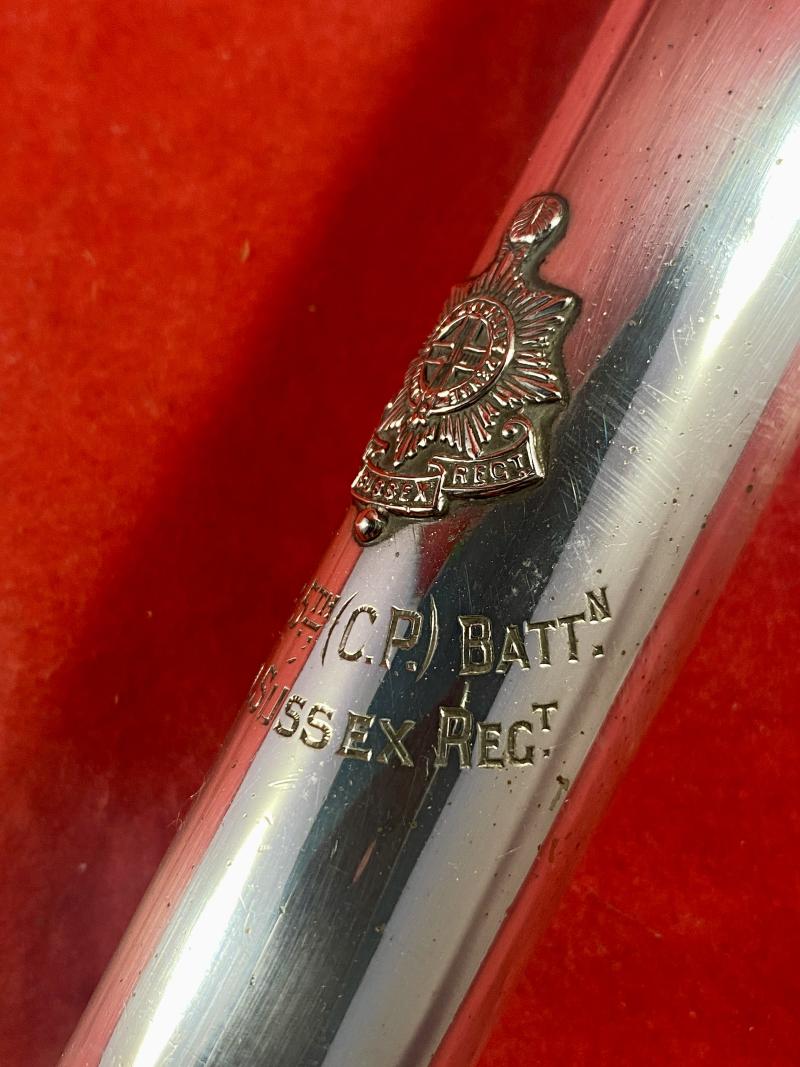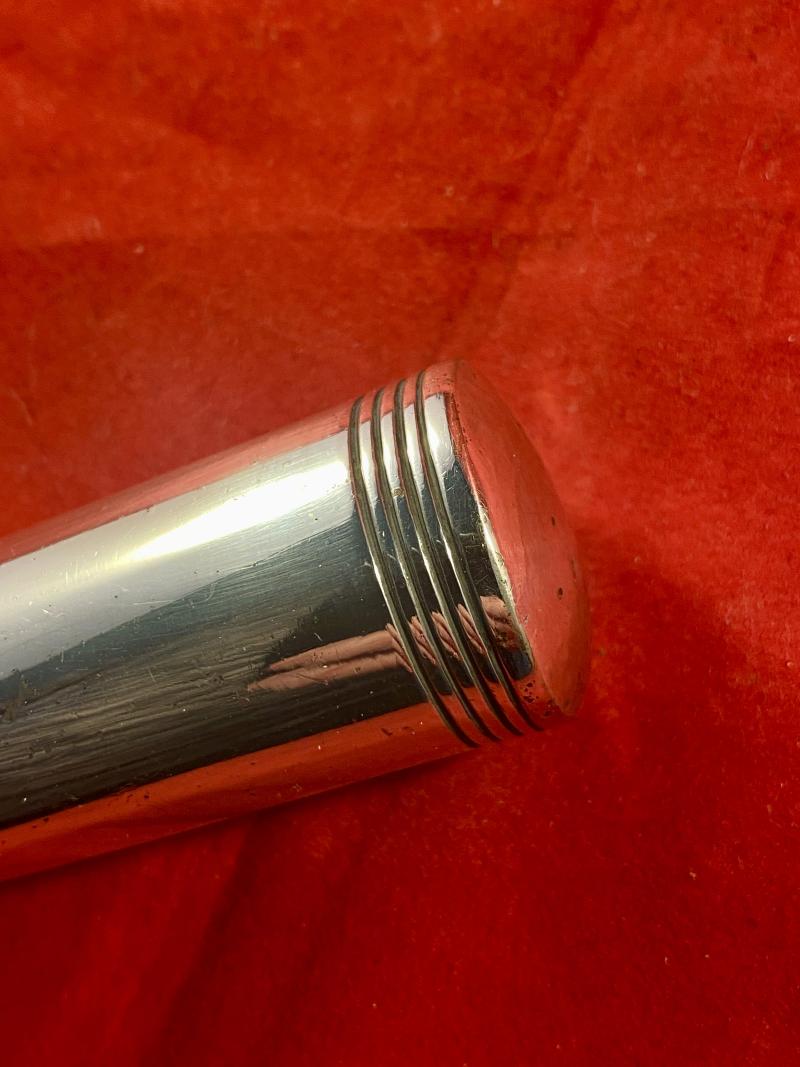Unusually Large WW1 Period, Silver Plate and Wooden Presentation Spoon for the 5th Battalion - Royal Sussex Regiment
Here on offer is an unusually large WW1 period, silver plate and wooden presentation spoon for the 5th Battalion - Royal Sussex Regiment.
This large spoon has been beautifully made with a heavily silver-plated handle and a carved wooden spoon bowl.
On the front of the handle is a finely detailed Royal Sussex Regimental emblem, which I think is made from sterling silver?
Underneath the emblem it is engraved with a dedication:
E.Coy 5th (C.P.) BATTn
Royal Sussex Regiment
This expands to read:
E. Company, 5th (Cinque Ports) Battalion, Royal Sussex Regiment.
Some related history:
The 5th (Cinque Ports) Battalion, The Royal Sussex Regiment, was a Territorial Force battalion formed in April 1908. Its natural heir was the 2nd Volunteer Battalion, Royal Sussex Regiment.
The battalion was headquartered at Hastings and in February 1914, the disposition of its eight companies was as follows:
A Company: Hastings; drill station at Eastbourne and Hailsham
B Company: Battle; drill stations at Dallington, Sedlescombe, Staplecross, Robertsbridge and Bexhill
C Company: Wadhurst; drill stations at Burwash, Flimwell, Hurst Green, Ticehurst and Frant
D Company: Lewes; drill stations at Glynde and Stanmer
E Company: Rye; drill stations at Icklesham, Winchelsea, Peasmarch and Northiam
F Company: Uckfield; drill stations at East Hoathly, Hadlow Down, Nutley, Buxted, Newick and Heathfield
G Company: Crowborough; drill stations at Blackham, Hartfield, Groombridge, Mayfield and Rotherfield
H Company: Ore; drill station at Westfield
1/5th (Cinque Ports) Battalion
August 1914 : in Hastings. Army Troops attached to Home Counties Division.
Moved to France in early 1915.
21 February 1915 : came under command of 2nd Brigade in 1st Division.
20 August 1915 : transferred as Pioneer Battalion to 48th (South Midland) Division.
November 1917 : moved with the Division to Italy.
During WW2.
1st Battalion remained in Egypt for the first year of the Second World War (1939-45), before fighting in Abyssinia (1940-41), Libya (1941-2) and Tunisia (1942-43).
It spent 1943 alternating between Egypt and Palestine, prior to landing in Italy in December and fighting at Monte Cassino (1944). In November 1944, it moved to Greece following the German retreat.
2nd Battalion deployed to France in April 1940 and suffered heavily in its retreat to Dunkirk. It was two years before it returned to action, fighting at Alam Halfa (1942) and El Alamein 1942) in North Africa.
In 1943, 2nd Battalion (along with volunteers from the Territorial 4th and 5th Battalions) was converted into 10th Battalion, The Parachute Regiment. This fought at Arnhem in 1944. Meanwhile, a new 2nd Battalion had been formed to join the invasion of Persia (now Iran) and Iraq in 1943.
Altogether, 14 battalions were raised during the conflict. Although most were used for home defence or as training units, the Territorial 6th and 7th fought in France in 1940, and the 9th Battalion in Burma during 1943-45.
In 1966, it merged with The Queen’s Royal Surrey Regiment, The Queen’s own Buffs, The Royal Kent Regiment and The Middlesex Regiment to form The Queen’s Regiment.
The spoon is in excellent condition with a very tiny ding on the front and some very tiny pitting of the silver plating on the reverse. The handle makes a slight rattling sound when inverted, as something has either been placed inside the handle or some dry fixing adhesive has come away?
It measures 18.25” (46.5cm) long and bowl is 3” (7.7cm) wide.
It weighs 225g.
Please see my pictures for the details of the condition, which complement this description.
Please see my TERMS OF BUSINESS regarding Deliver Charges and Insurance regarding additional insurance cover, should you require it, BEFORE the item is dispatched.
The responsibility lies with the customer to check with your Customs restrictions that this item can be imported into your country.
Code: 51134
75.00 GBP

